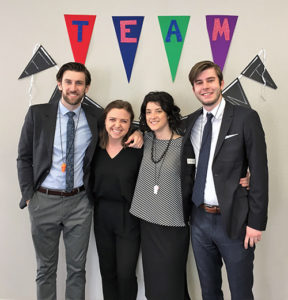Translating Concepts into Actions
State and local human service programs increasingly recognize the benefits of using human-centered design and behavioral economics to design and deliver services. At the same time, many agencies may lack internal capacity to bridge the concept-to-action divide, which is why seeking outside technical assistance can be a critical first step.
The Kansas Department of Children and Families (DCF) took that first step in April 2018 with the help of MEF staff. MEF, in partnership with the Center for Applied Behavioral Science, facilitated a highly interactive, two-day workshop for over 100 frontline Kansas DCF staff as part of the OFA Peer TA programming in Wichita, Kansas.
Our Process

The workshop focused on using insights from behavioral economics, creativity theory, and human-centered design to increase participant engagement in DCF’s various programs. Over two days, attendees worked together in small table teams to practice the behavioral diagnosis and design process from start to finish to develop their own “behaviorally designed” prototypes.
The most common problem teams sought to address was low rates of attendance at required program meetings, a familiar problem to most TANF programs. Facilitators demonstrated how frontline staff can use insights from psychology, economics, and behavioral science to understand aspects of human nature that may be hindering meeting attendance as well as ways staff can use those same insights to design approaches to better motivate attendance.
Staff-developed, Behaviorally-Informed Prototypes

With the help of countless markers, poster paper sheets, and Post-It notes, teams brought their redesigned welcome letters, smartphone applications, and text message sequences to life. Participants left excited and prepared to collect user feedback on their prototypes when back at their home offices, emboldened to play an active role in human-centered design themselves.

From Workshop to Reality
Following the workshop, state leadership took interest in several of the staff-led service and product prototypes developed. DCF is now actively exploring implementing the staff-led behavioral designs for local or statewide use, the final step in the concept-to-action bridge.
